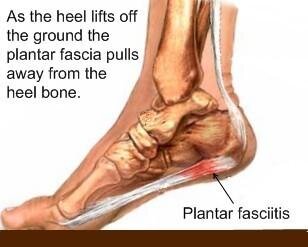5 Common Injuries That Occur While Training For The NYC Marathon (and how to prevent and recover from them)
So it is that time of the year again. Patients coming into my physical therapy practice “Integrative Physical Therapy of NYC” having increased lower extremity related running injuries. The reason being is that many local residents of New York City are starting to increase their mileage while training for the NYC Marathon. Over the years I have seen many patients with various running injuries but I also have experience training for the NYC Marathon in 2008 and 2013. Those two experiences have given me a better insight on what injuries to expect and how to prevent them.
Let’s first discuss some of the more common running injuries I am starting to see related to increased mileage. Before I begin anyone who is training can develop an injury related to the fact that you are now placing a lot of repetitive motions on the Lower extremities. That fact alone can cause all sorts of issues. If you combine that with improper cross training and not enough rest the results can be painful. Here are a few common injuries associated with the NYC Marathon training.
The first injury I have been seeing is the standard hip flexor strain followed by ITB syndrome or runners knee. The other injuries that will arise are anterior and posterior shin splints. The final injury that I will see in my physical therapy office is plantar fasciitis. One of the simplest ways to prevent all of these injuries is to train properly. One of the first questions I will ask my patients is how many times per week are you running. If the answer is more than 3-4x/week I will say to the patient that they are running too much. I will always suggest usually three to four days a week of running.
One day should be what I call a normal run of 4-5 miles at your normal pace. Another day should be a hill day where your running route should have a significant amount of inclines and declines. That running day should also include some varying speeds and paces and should be around 4-6 miles. Finally, there should be a day of the week around August and September where you are getting your long miles in which are generally 12-19 miles up until the beginning of October. At that point, you should start to tapper these long runs down until the week before the marathon. If you feel compelled to run four days a week keep that 4th run short and easy and you should always have a day of rest or what I call a stretch day after the long run. Some cross training during the week is helpful such as yoga or Pilates and even some light weight training. I would like to give you an idea of how these specific injuries present so you can properly identify them and know how to stretch or strengthen those specific areas.
#1. Standard Hip Flexor Strain
First, the hip flexor strain will give the runner pain in the anterior aspect of the hip. Symptoms are usually increased with walking/running during the swing phase of the gait cycle. I would also like to show you some simple exercises to prevent and recover from this specific injury.
#2. ITB Syndrome (Runners Knee)
The next injury up for discussion is ITB syndrome or runners knee. This injury can present as pain in the lateral hip and glut area that can migrate into the lateral aspect of the thigh and knee area. Pain can be intense with associated hip abduction weakness. It is helpful to stretch the ITB and hip flexor daily to avoid these two injuries in addition to foam rolling activity for the two areas. Here are few illustrations of ITB syndrome in addition to some simple but effective exercises to keep your hip strong and your ITB flexible.
#3 and #4. Posterior and Anterior Shin Splints
Posterior and anterior shin splints are two other common injuries that will start to creep up on a runner training for the NYC Marathon. These two injuries present in either the outside or inside aspect of your shin. The pain can be stabbing in nature and increased whenever you move your ankle during the swing phase of the gait cycle while running or walking. Here is a picture of the shin splints locations in addition to some simple physical therapy exercises to help decrease pain.
#5. Plantar Fasciitis
Finally, the last acquired injury with NYC Marathon training is plantar fasciitis. This can also present as sharp stabbing pain in the bottom of the foot and heel area. Runners with this injury can also present with extremely tight calf muscles and decreased ankle range of motion. They present with pain when standing, walking and running. They also tend to present with increased pain in the early morning after they initially get out of bed. That is related to the fact that the entire night their calf and plantar fasciitis is in a shortened or relaxed position and now the initial shock of placing the foot on the floor can be very painful. A serious stretching program to the calf and consistent trigger point massage to the plantar fascia is the best way to combat this injury. I highly recommend to my patients that they wear a plantar fascia night splint and use a trigger point ball to perform self-massage. Here a few pictures of plantar fascia anatomy and stretches in addition to the night splints I recommend.
https://www.amazon.com/Plantar-Fasciitis-Posterior-Night-Splint/dp/B00PX5HGPE/ref=sr_1_1_s_it?s=hpc&ie=UTF8&qid=1502322787&sr=1-1&keywords=plantar+fasciitis+night+splintshttps://www.amazon.com/PowerLix-Compression-Athletics-Recovery-Fasciitis/dp/B01M3Q3VFG/ref=sr_1_2?s=hpc&ie=UTF8&qid=1502322197&sr=1-2-spons&keywords=plantar+fasciitis+sock&psc=1
















